The Apple Thunderbolt Display Review
by Anand Lal Shimpi on September 23, 2011 2:56 AM EST- Posted in
- Displays
- Mac
- Apple
- Thunderbolt
- Thunderbolt Display
Brightness and Contrast
For brightness, black level, and contrast points, we use the same colorimeter setup described earlier. Specifically, we use an Xrite i1D2 with ColorEyes Display Pro, and take measurements at maximum and minimum brightness of white and black targets. Dynamic contrast is turned off. We also let the panels settle in for a half hour at the respective settings before taking any measurements.
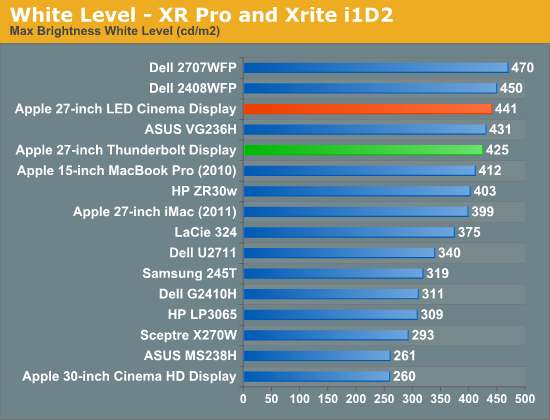
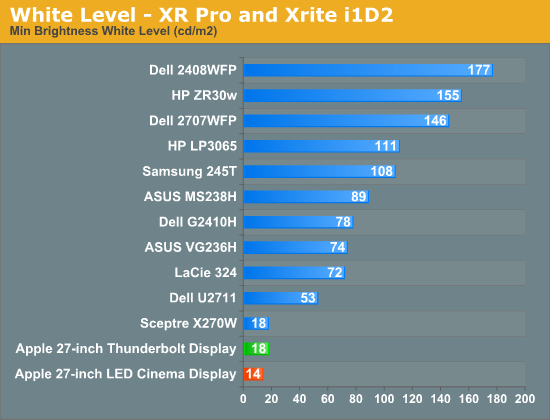
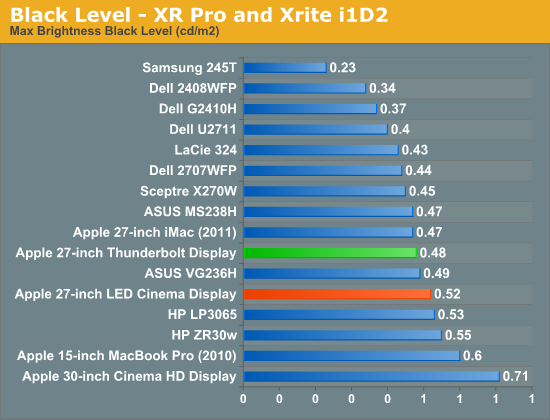
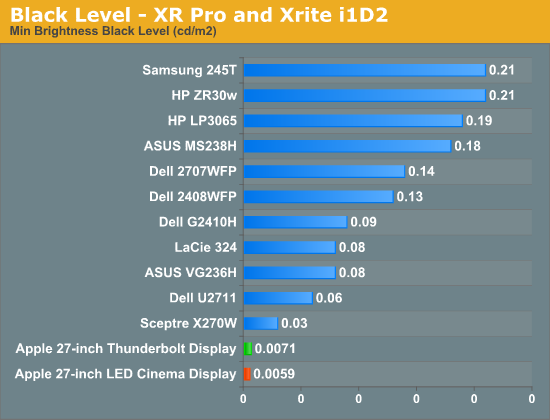
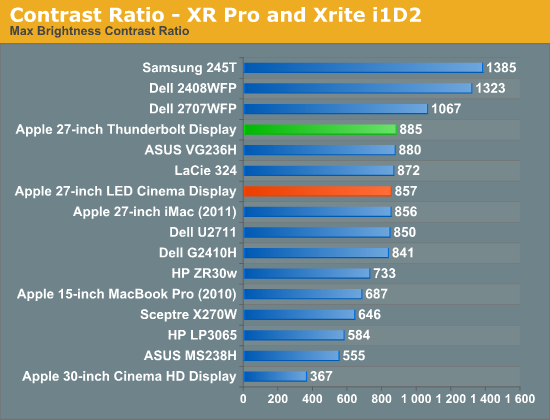
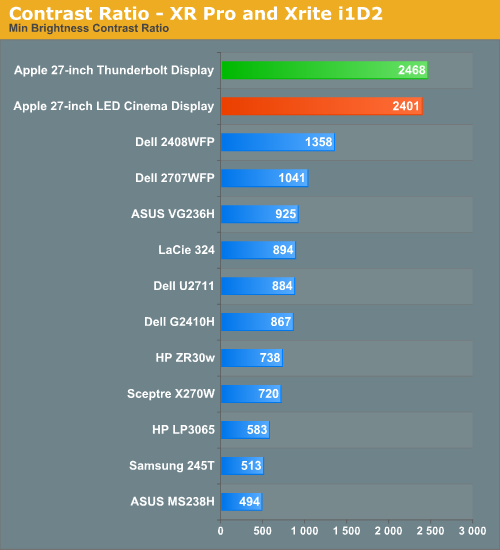
If you were expecting an change in panel quality you won't find it here. The Thunderbolt Display is almost exactly the same as last year's panel but with a bunch of new features.
Brightness Uniformity
In addition to the performance at center, we’ve also added 9-point testing for brightness, both white and black. This is done the same way we measure color uniformity, except we only care about measured intensity. We set the monitor to near 200 nits, and then measure those 9 points.
The Thunderbolt Display performed very well in these tests. The display was very consistent everywhere. Although the center of the panel measured about 8% brighter than the surroundings, it wasn't noticeable in actual use. Brightness uniformity was remarkably consistent through the majority of our measurements, even better than the original 27 we reviewed last year.
White Level Uniformity


Black Level Uniformity

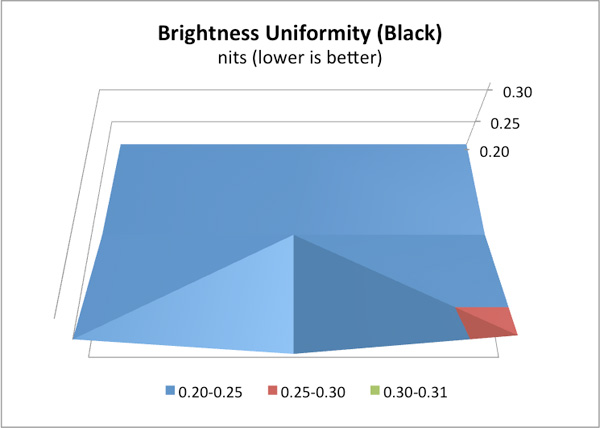
Viewing Angles
The Thunderbolt Display uses an IPS panel which guarantees good horizontal and vertical viewing angles. It doesn't matter how you tilt the display or from what angle you're looking at it (within reason), you'll get a fairly consistent image.















275 Comments
View All Comments
danjw - Friday, September 23, 2011 - link
I really thought the computer industry was done with the whole daisy chain idea. Requiring every device to have two connectors just adds to cost. Requiring licensing from Intel for the icon and Intel being the only controller manufacturer, will further drag it down. I think it will be just about as successful as firewire, limited success with Apple customers, but not much else. Sure, you may see the ports on PCs, but there will be a much larger selection of peripherals that support USB 3.0.touringsedan - Friday, September 23, 2011 - link
Listened to your audio clip that was corrupted during your file transfer.Wanted to comment that I have a 1st gen 27" and it does the same thing to me and usually I have to recycle the power to the display and all is returned to normal.
It seems to occur almost never now for some reason, but was about to return it and it eventually tapered off.
I do have the keyboard and an external USB drobo attached to my display.
AmishElvis - Friday, September 23, 2011 - link
It seems like the next logical step would be to include the video card inside the monitor, then let the computer use it via the pci-e lanes.jecs - Friday, September 23, 2011 - link
I will love that. Even an upgradable option.Dug - Friday, September 23, 2011 - link
FANTASTIC IDEA!!!!!!Constructor - Friday, September 23, 2011 - link
10Gb/s is a lot for an external port, but graphics cards can need even more bandwidth under heavy load, so even Thunderbolt would still be a bottleneck, particularly for the bigger cards.Nevertheless, more than one manufacturer has already announced external PCIe enclosures for Thunderbolt, so you'll be able to plug any graphics card into that and as long as there's a TB-compatible driver for it it will work as desired.
Putting the GPU into the display is nice for the few months as long as the GPU is still up to date, but it will become a drag on the monitor when the GPU is overtaken by newer models. The separate box may be the more flexible option there.
Iketh - Friday, September 23, 2011 - link
why can't the monitor have a removable backplate?Constructor - Friday, September 23, 2011 - link
It does, sort of. You just need suction cups and a set of Torx screwdrivers getting there...! B-)But seriously: What for, exactly?
jecs - Saturday, September 24, 2011 - link
Ok. But isn't this the first Thunderbolt implementation? Intel promised a lot more bandwidth. An external box could be an option but obviously not as great as inside the display.Constructor - Saturday, September 24, 2011 - link
Right now it's 10+10Gb/s and that will remain the limit for some time.And I still wouldn't want a quickly outdated GPU in the display which could have a much longer usable lifespan, but that's of course a matter of preference. We'll see what will become available.